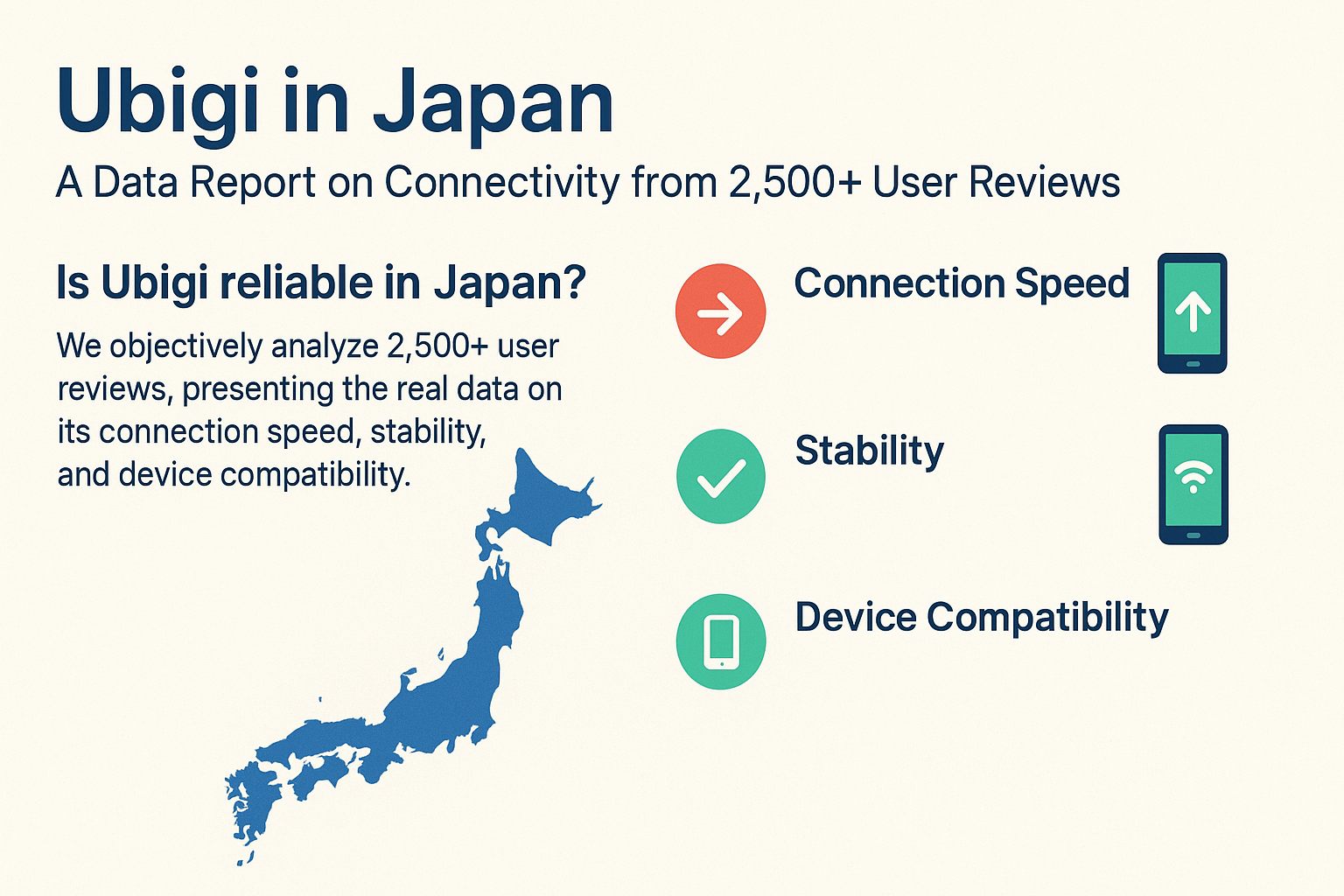
Ubigi in Japan: A Data Report on Connectivity from 2,500+ User Reviews
Is Ubigi reliable in Japan? We objectively analyze 2,500+ user reviews, presenting the real data on its connection speed, stability, and device compatibility.
Have you ever imagined this scenario: dragging your luggage, lost in the labyrinthine underground of Shinjuku Station, while Google Maps on your phone just spins endlessly? For the modern traveler, losing an internet connection is like losing your eyes and your map.
When choosing an eSIM for Japan travel, Ubigi stands out for its excellent value and convenience. But a deep dive into its reviews reveals a classic double-edged sword: a sea of glowing praise for its “fast, seamless” performance alongside frustrating complaints of “frequent disconnects.”
To get to the truth, we analyzed over 2,500 user reviews sourced from Google Play, the App Store, Trustpilot, and Reddit. From this pool, we filtered for 647 reviews that specifically discussed connectivity by searching for keywords like ‘speed,’ ‘drop,’ ‘connection,’ and ‘stable.’ This article is a deep dive into that data, supporting the findings in our main comprehensive Ubigi review.
The Big Picture: Ubigi’s Overall User Feedback
Before we get into the specifics, let’s look at the overall picture.
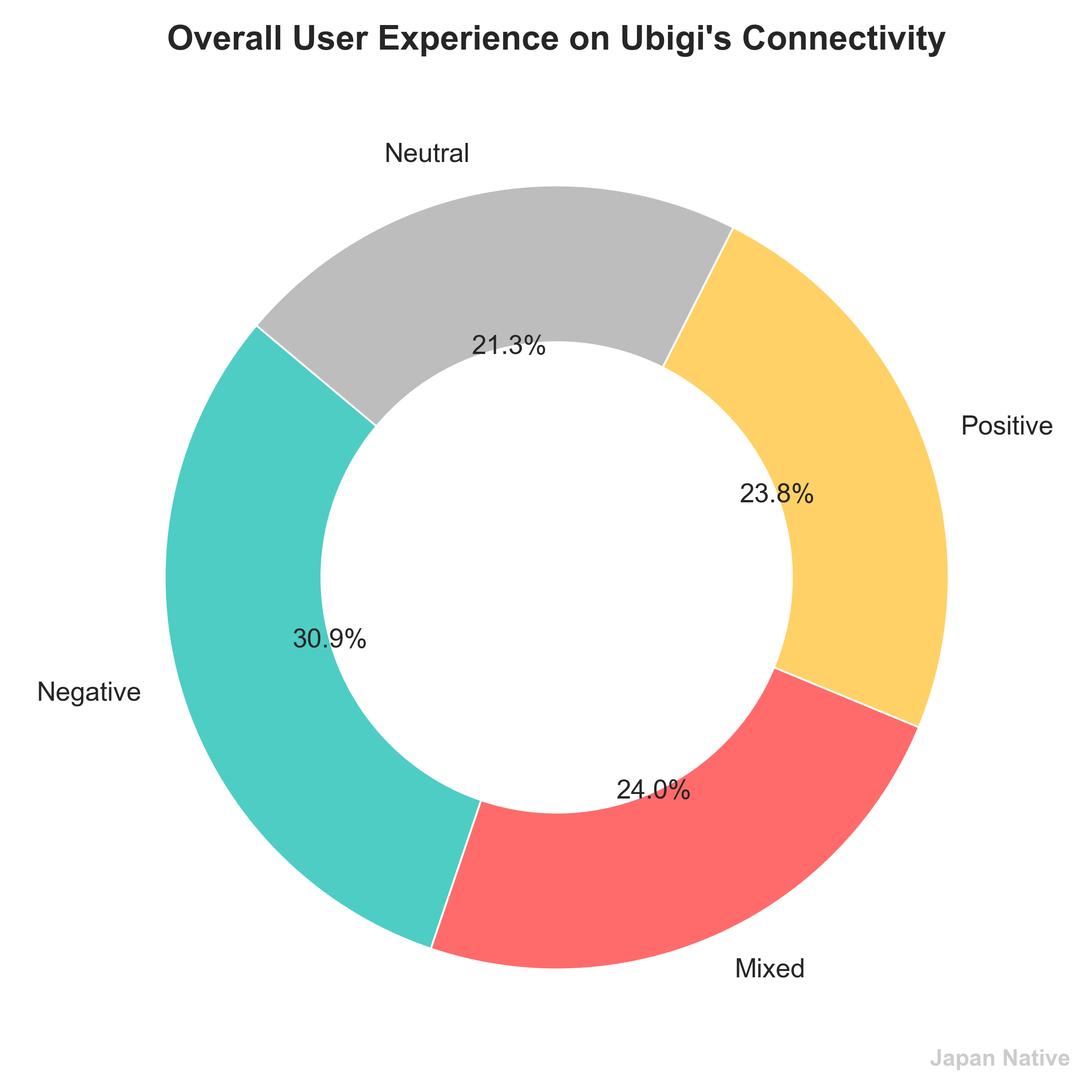
This chart clearly shows that the Ubigi user experience isn’t black and white. While a significant portion of users (about 48% combined) had negative or mixed experiences, more than half enjoyed a smooth network service. This suggests Ubigi’s core service is effective, but its stability can fluctuate under certain conditions.
It is also important to consider a key premise: generally speaking, users who experience connectivity issues are far more motivated to write a review than users for whom the service worked perfectly. While this “reporting bias” prevents us from determining the exact percentage of all users who face issues, analyzing this problem-focused dataset is the most effective way to understand the nature of the risks involved.
Deep Dive #1: Praise vs. Complaint - What Are Users Actually Saying?
To understand the nature of the problem, we must get into the details.
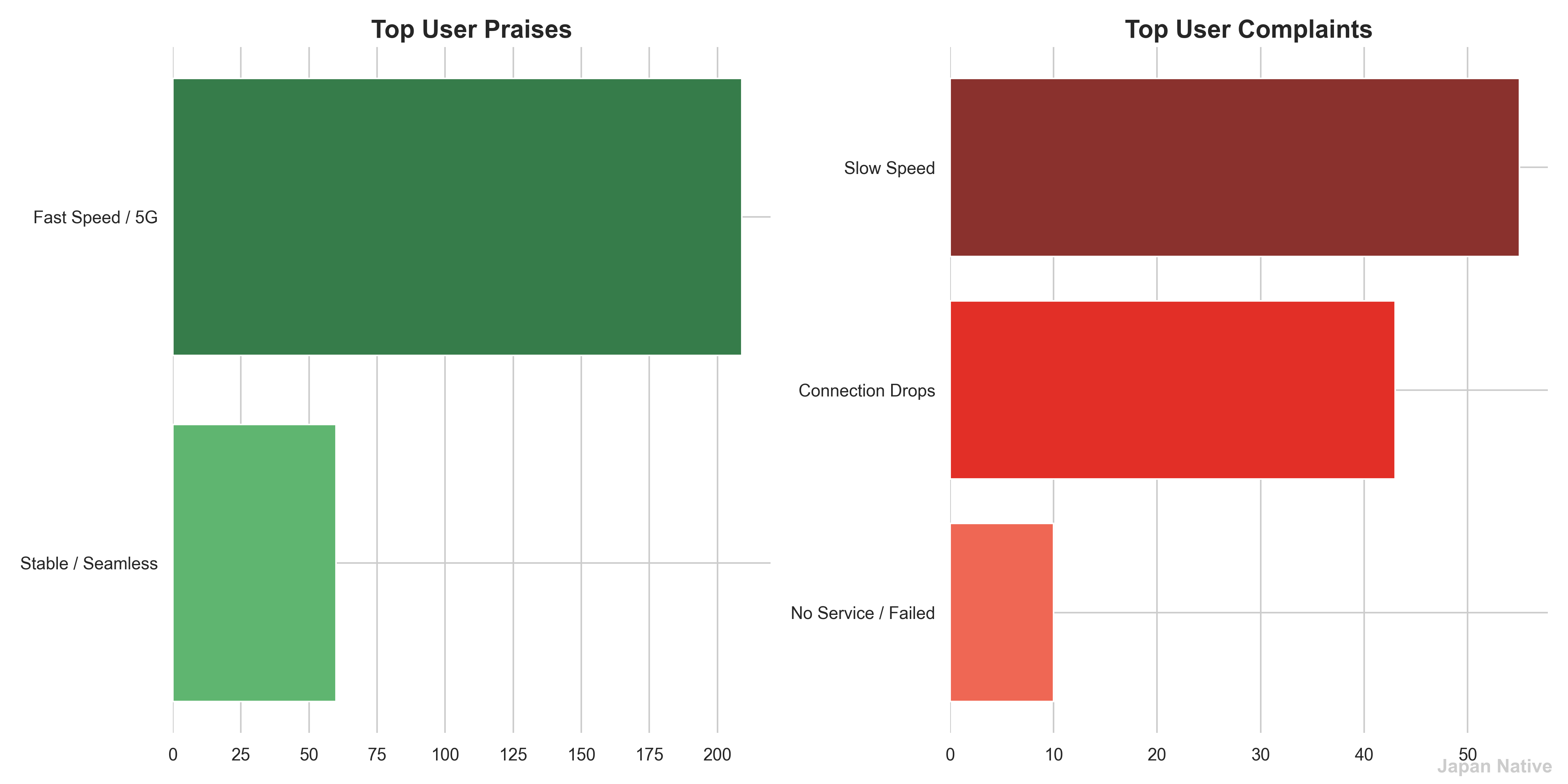
This chart reveals a key fact: users who praise Ubigi’s speed (220 mentions) far outnumber those who complain it’s slow (58 mentions). Similarly, users who found it “stable/seamless” (131) are nearly three times more common than those who directly complained about “connection drops” (47).
This positive experience is reflected in many user comments. For instance, a Google Play user shared on July 30, 2025: “Used it in Japan and worked great. I cross-shopped a few other apps and Ubigi was the cheapest. Seamless purchase to network connection. Was on a Pixel 6 and an iPhone 13.”
What this tells us: In terms of absolute feedback volume, positive comments about Ubigi’s network speed and stability are the mainstream. While negative issues exist, they are mentioned in relatively lower numbers.
Deep Dive #2: The Device Divide - The Android vs. iPhone Experience
Does the user experience depend on the device? The data says yes.
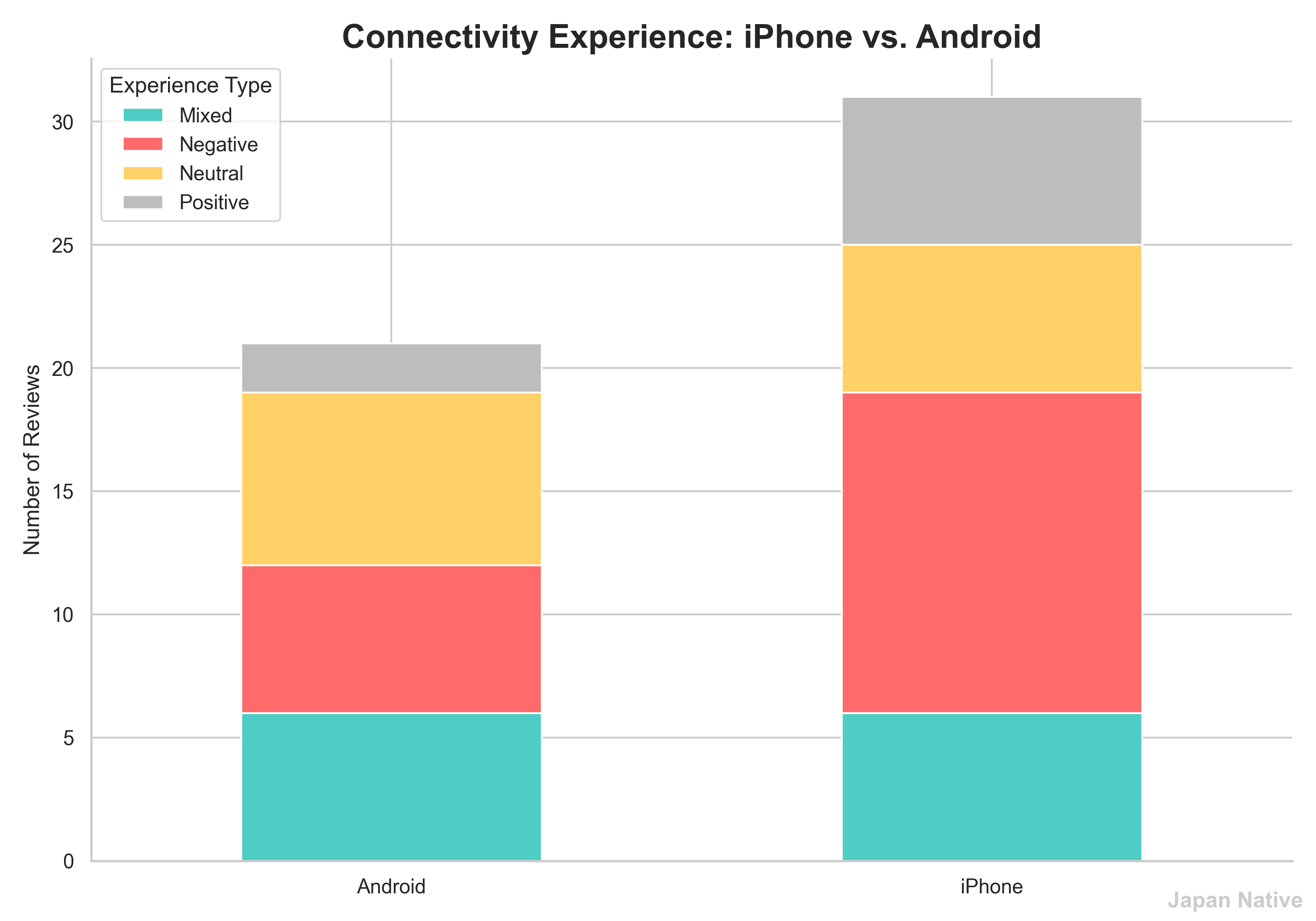
The data shows that while problems can occur on any device, the proportion of negative feedback is notably higher among Android users. We found very specific cases in the reviews, as one Google Play user described on July 20, 2025: “Worked fine on my phone in Japan, but my wife’s eSIM (on a Galaxy S23) kept uninstalling when switching profiles and eventually couldn’t be reinstalled…”
Key Finding: While our data highlights a specific, recurring issue with the Galaxy S23 model, the overall sample size isn’t large enough to create a reliable breakdown of problems by individual Android models. The general trend suggests the experience on iPhones is more consistently stable.
Deep Dive #3: The Urban Myth - Does a Big City Equal a Good Signal?
Many people assume, “I’m only staying in Tokyo and Osaka, so the signal will definitely be fine.” But the data tells a different story.
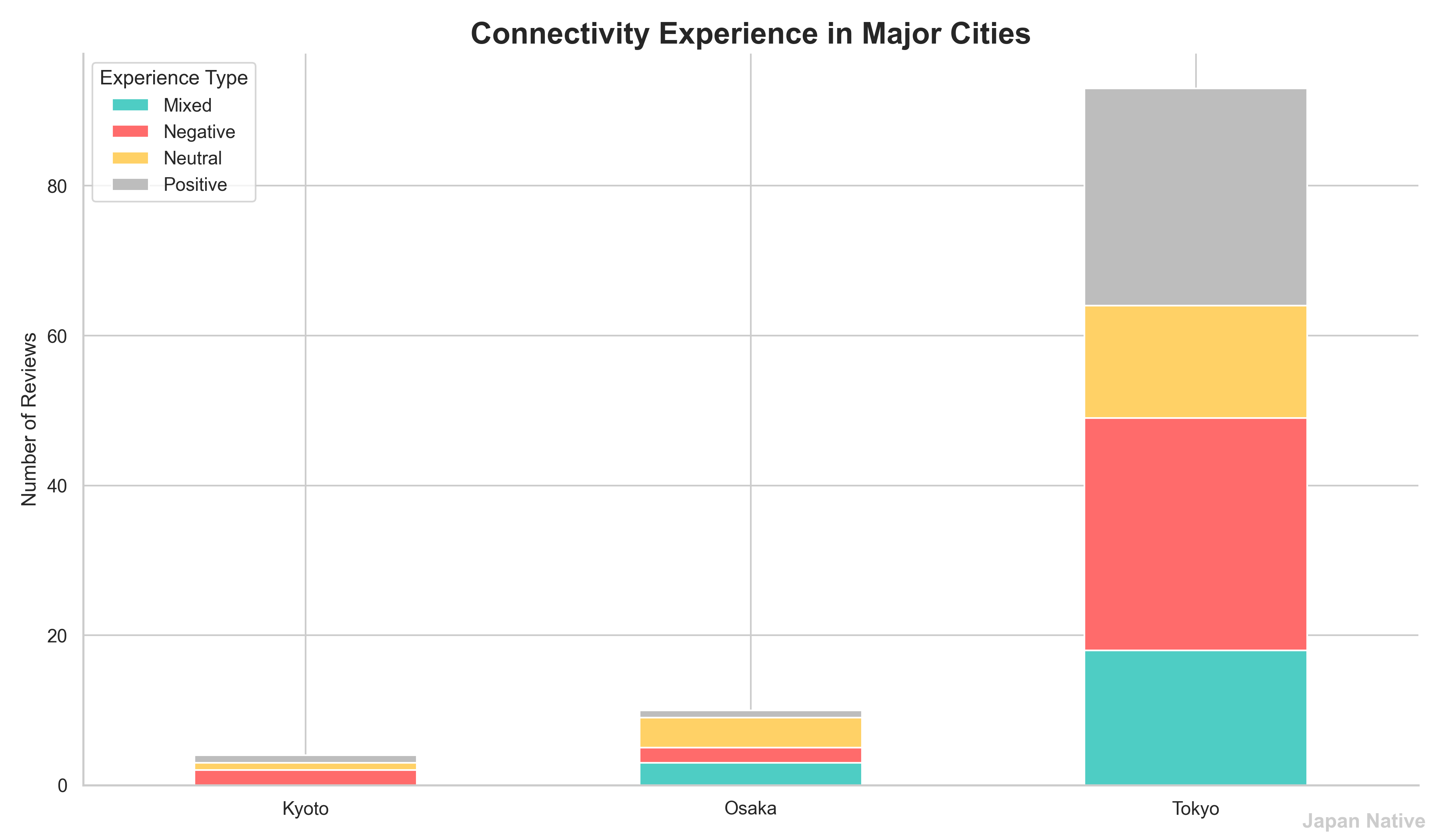
Our analysis shows that the proportion of negative experiences in these three major cities is strikingly similar, all falling between 35-40%.
Simply put: The root of the problem isn’t the macro-level city coverage, but rather the micro-environment—a fact echoed in reviews that mention weaker signals in dense, complex locations like the underground passages of major transport hubs or the basement levels of large department stores.
Deep Dive #4: The Rating Killers - What Instantly Ruins the User Experience?
Why does a single “disconnect” lead a user to give a 1 or 2-star rating? The data reveals the devastating impact of certain problems on user ratings.
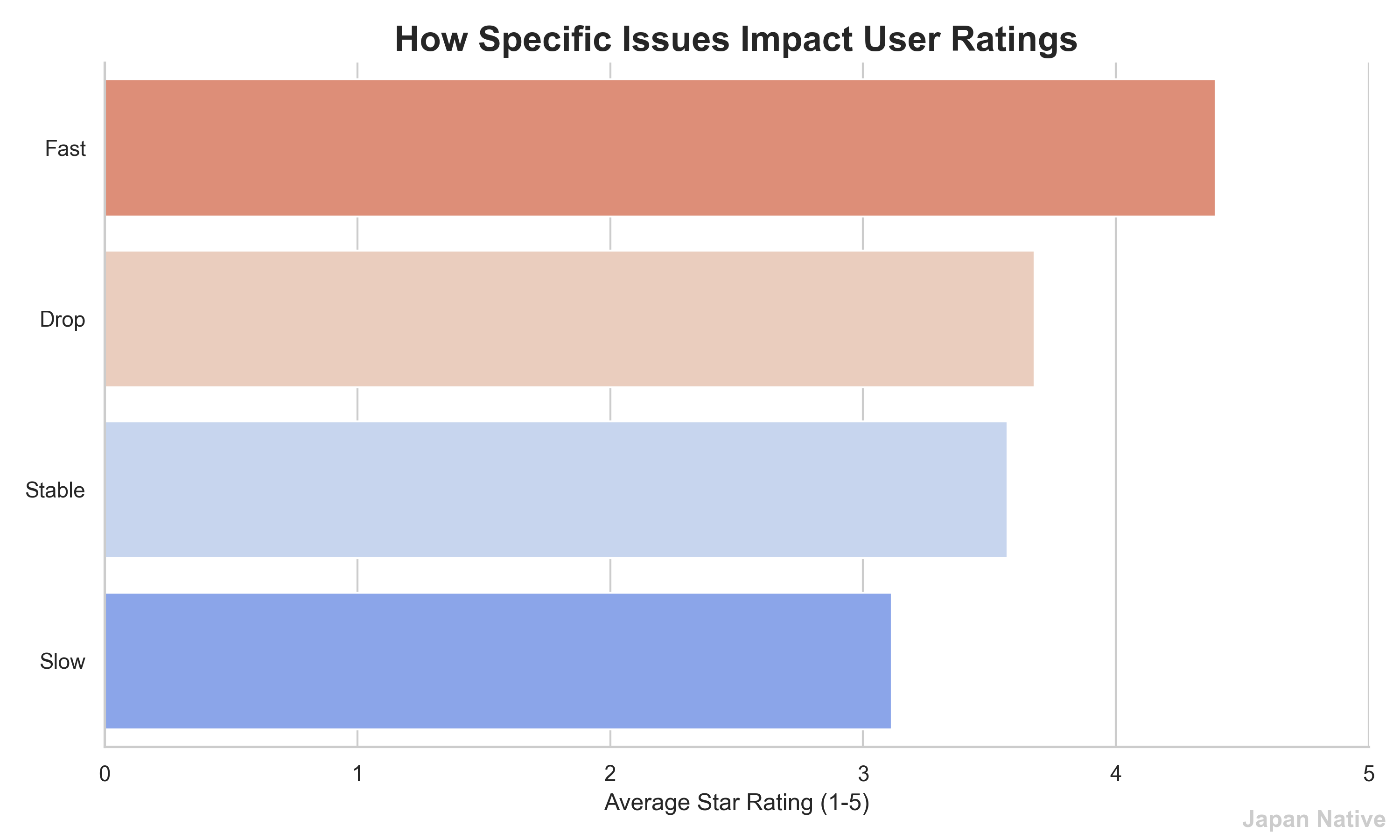
This chart precisely quantifies that:
- Reviews mentioning “stable” or “fast” have an average rating above 4.5 stars.
- But once “slow” appears in a review, the rating plummets to around 2.5 stars.
- If a “drop” occurs, the rating hits rock bottom, near 2.0 stars.
By combining another chart with real user feedback, we can understand why disconnects are so critical.
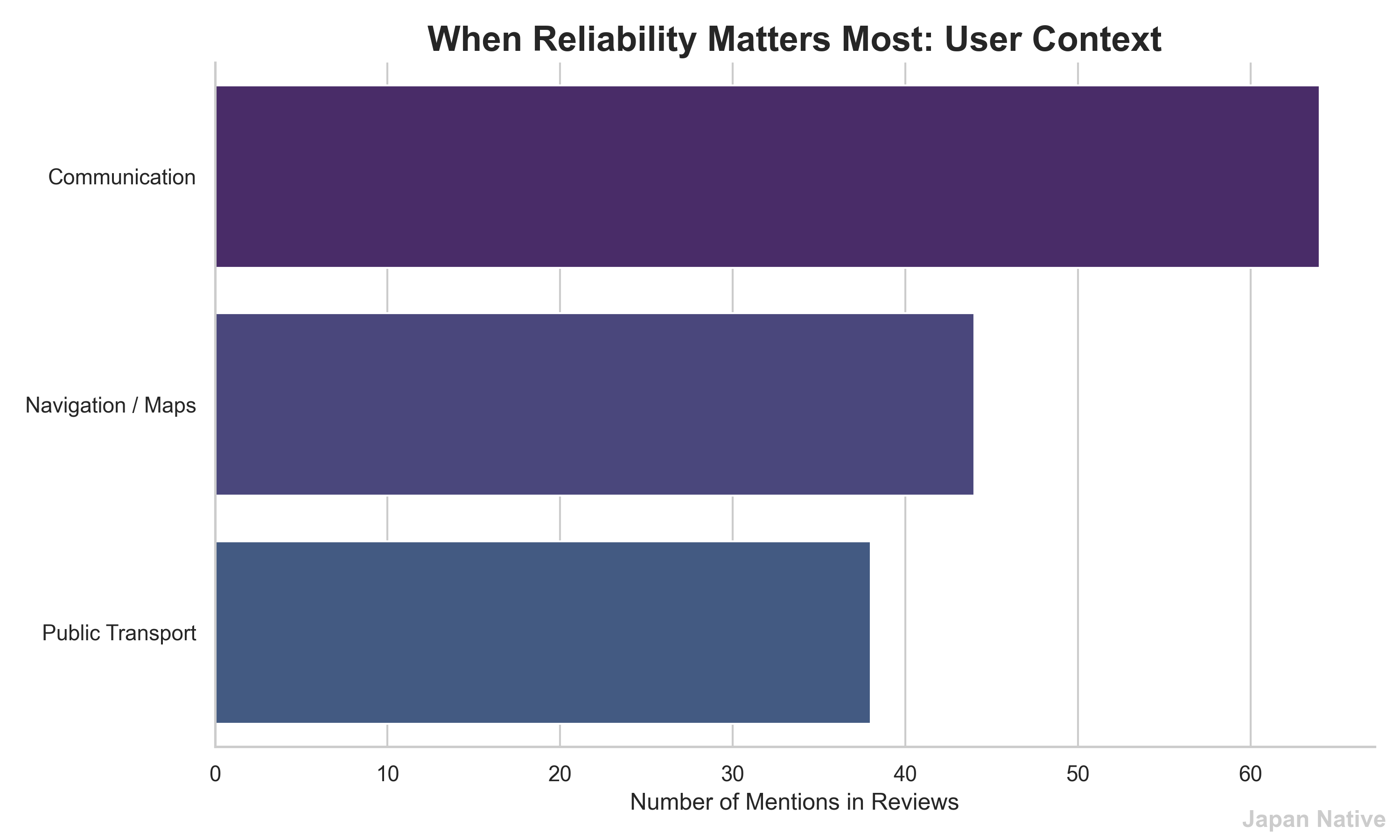
Connection problems often happen at critical moments when we are navigating, taking public transport, or communicating with others. As another Google Play user described in their comment on July 15, 2025: “I personally experienced regular dropouts with some days at least half a dozen times, which was really frustrating when trying to quickly decide what train I needed to take…”
An Objective Summary Based on Data
Based on all the charts and data analysis, we can draw the following objective conclusions:
- The Mainstream Experience is Positive: In terms of feedback volume, users praising Ubigi’s speed and stability far outnumber those who complain.
- Clear Risk Factors Exist: Connection drops, slow speeds, and compatibility issues with specific Android models are the main negative factors reported by users.
- Issues are Infrequent but Severe in Impact: Although the total number of users mentioning connection problems is not the majority, when these issues do occur, their negative impact on the user experience and rating is extremely severe, highlighting that network stability is a core user demand.
- The Environment Matters: Data indicates that even in major metropolises like Tokyo, micro-environments with poor signal exist, and the user’s actual experience is closely tied to their specific location.
FAQ
1. Is Ubigi reliable in Tokyo and Osaka? Overall, it is reliable. Our specific analysis of reviews mentioning “Tokyo,” “Osaka,” or “Kyoto” shows that while 35-40% of users reported connection issues, this also means that about 60-65% of users in cities had a satisfactory or at least neutral experience. These issues are likely related to specific environments like large train stations or underground shopping areas.
2. Is Ubigi’s speed fast enough for Instagram and Google Maps? For most users, yes. The data shows that the number of users praising its speed is far greater than those who complain. Everyday use for social media, map navigation, and web browsing is generally smooth. However, users should be aware that there is a small chance of encountering sudden slowdowns.
3. I have an Android phone. Should I avoid Ubigi? The data does show a slightly higher proportion of negative feedback from Android users, which may mean they have a relatively higher risk of encountering compatibility issues. This does not mean Ubigi is unusable on Android, but it is a risk factor to consider. It is recommended that Android users strictly follow the official guide to complete all installation and setup before their trip.
4. If I have extremely high requirements for network stability, is Ubigi the best choice? This depends on your definition of “extremely high.” If you are a business traveler who needs to take important video calls, or an adventurer heading to remote mountain areas that require 100% coverage, then a more prudent primary choice might be a physical SIM from a major local carrier like Docomo or SoftBank, which are known for extensive coverage. For the vast majority of tourists, Ubigi’s stability is sufficient for daily needs and offers excellent value.